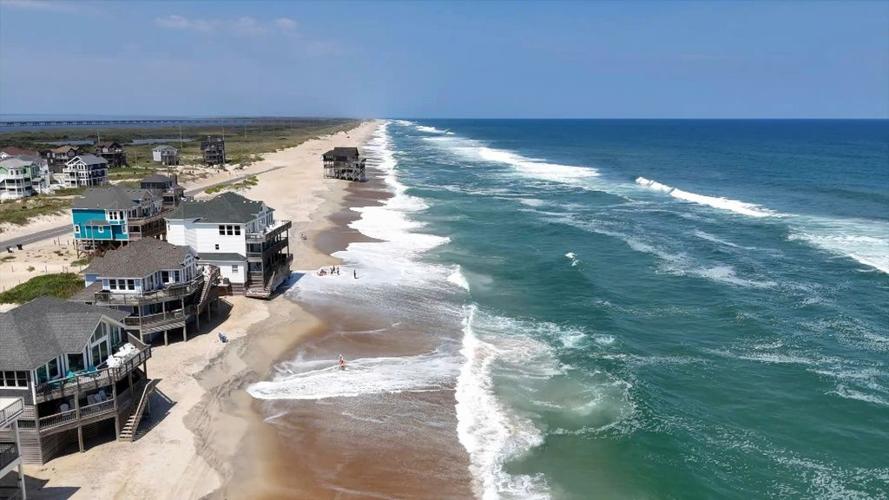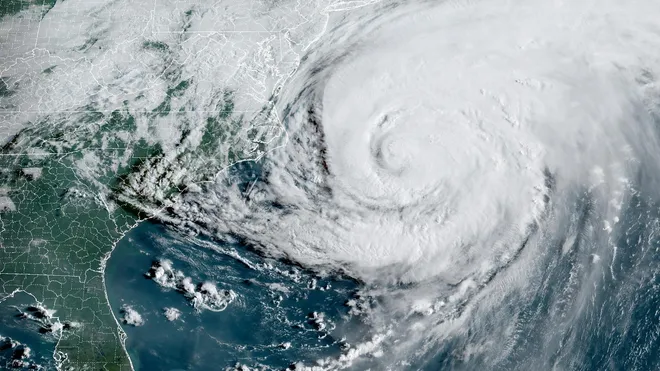The Atlantic hurricane season has once again reminded the United States of its unforgiving power. This time, Hurricane Erin has taken center stage, producing dangerous surf conditions along the East Coast. From Florida to New England, coastal communities are feeling the impact of massive waves, rip currents, and heightened risks to both human life and infrastructure.
- The Formation of Hurricane Erin
- Dangerous Surf Conditions: Why Hurricane Erin Is a Threat
- The Human Impact: Stories from the Shore
- Historical Context: Hurricanes and East Coast Surf
- Economic Consequences of Erin’s Surf
- Environmental Impacts
- Expert Warnings and Forecasts
- Community Preparedness and Response
- The Role of Climate Change
- Looking Ahead: The Atlantic Hurricane Season
- FAQs
- Why is Hurricane Erin causing dangerous surf along the East Coast?
- What are rip currents, and why are they dangerous?
- Which states are most affected by Hurricane Erin’s surf?
- How are local communities responding to the dangerous surf?
- Does Hurricane Erin highlight the role of climate change?
- How long will the dangerous surf conditions last?
- What safety tips should people follow during dangerous surf conditions?
- Conclusion
While Erin has not made direct landfall in many areas, the storm’s vast reach demonstrates how even distant hurricanes can trigger widespread disruptions. For beachgoers, fishermen, surfers, and coastal residents, the effects are impossible to ignore. More than just a weather headline, Hurricane Erin is a real-time case study in how climate, geography, and human activity intersect when nature turns volatile.
This article explores the full picture: how Hurricane Erin formed, why its surf conditions are so dangerous, what experts are saying, and how communities are responding. Along the way, we examine historical context, economic consequences, and vital safety steps that can save lives.
The Formation of Hurricane Erin
Hurricane Erin developed in the warm waters of the Atlantic, fueled by sea surface temperatures above 80°F. Meteorologists often note that such temperatures provide the “fuel” hurricanes need to strengthen. According to early reports, Erin began as a tropical depression before quickly gaining strength into a tropical storm and then a hurricane.
What makes Erin particularly dangerous is not just its wind speed but its sheer size. The storm spans hundreds of miles, which means its waves and surf extend far beyond its center. Even without making landfall, Erin’s powerful swells have already reached popular beaches along the East Coast, putting swimmers and surfers at risk.
As one National Weather Service forecaster explained, “People often assume that if a hurricane isn’t directly hitting them, they’re safe. But with Erin, the storm’s surf impacts stretch for hundreds of miles, creating life-threatening conditions where skies may even appear clear.”
Dangerous Surf Conditions: Why Hurricane Erin Is a Threat
Surf conditions along the East Coast have dramatically worsened due to Hurricane Erin. Reports indicate that waves are reaching heights of 10 to 15 feet in some areas, accompanied by dangerous rip currents.
Rip currents are fast-moving channels of water that pull swimmers away from shore. They are among the deadliest coastal hazards, accounting for nearly 100 deaths in the U.S. each year. The combination of Erin’s massive waves and powerful rip currents has already led to numerous beach closures from Florida to the Carolinas and beyond.
Lifeguards have been issuing stern warnings to the public, urging people to avoid entering the ocean until conditions improve. Yet, as is often the case, some thrill-seekers still attempt to surf or swim in storm-driven waves, risking their lives.
The Human Impact: Stories from the Shore
Along the Outer Banks of North Carolina, local residents describe the ocean as “angrier than usual.” One fisherman told reporters that waves were crashing with such force they rattled windows in nearby houses.
In New Jersey, beaches popular with summer tourists were closed ahead of the Labor Day holiday. For small businesses reliant on tourism, this could mean a significant financial hit. “We understand the safety concerns, but closing the beaches on a holiday weekend is devastating for us,” said a boardwalk vendor.
Meanwhile, in Florida, where surf conditions were especially severe, several rescues had to be made by lifeguards. Authorities emphasized that even strong swimmers underestimate the pull of rip currents intensified by hurricanes like Erin.
Historical Context: Hurricanes and East Coast Surf
Hurricane Erin is far from the first storm to send dangerous surf barreling into the East Coast. Historically, hurricanes such as Sandy in 2012 and Florence in 2018 left lasting scars not only through direct landfall but also through storm surges and surf-related damage.
Experts point out that as climate change continues to warm the oceans, hurricanes may grow larger and more frequent, making situations like Erin’s dangerous surf more common. According to NOAA, the average cost of hurricane damage in the U.S. has risen sharply, with estimates showing over $1.5 trillion in losses since 1980.
Hurricane-driven surf is a reminder that even “minor” storms or offshore hurricanes can trigger major coastal risks. In some cases, erosion caused by waves can permanently alter coastlines, washing away beaches and weakening natural barriers that protect inland communities.
Economic Consequences of Erin’s Surf
The surf generated by Hurricane Erin is more than just a temporary inconvenience. It has real economic consequences. Beach towns along the East Coast rely heavily on tourism, particularly during the summer months. With beaches closed due to unsafe conditions, revenue from hotels, restaurants, and recreational rentals can plummet.
Additionally, commercial fishing is disrupted. High waves and rough seas keep boats docked, leading to losses for fishermen and supply shortages for seafood distributors.
Insurance companies are also monitoring Erin closely. Even if the storm does not make landfall, its surf-driven damage to docks, piers, and waterfront properties can lead to costly claims.
Environmental Impacts
Beyond human and economic effects, Hurricane Erin’s surf conditions are reshaping the coastal environment. Strong waves can accelerate erosion, washing away protective dunes and barrier islands. These natural defenses are crucial in protecting communities from storm surge during future hurricanes.
Wildlife is also affected. Sea turtle nests, common along Florida and Carolina beaches, are at risk of being destroyed by high surf. Coastal marshes and estuaries may see saltwater intrusion, which disrupts ecosystems and threatens freshwater species.
Expert Warnings and Forecasts
Meteorologists continue to track Hurricane Erin’s path closely. While current models suggest the storm may not make direct landfall on the U.S. mainland, its lingering presence offshore guarantees ongoing surf risks.
Dr. Emily Carter, a hurricane specialist, noted: “Hurricane Erin is a textbook example of why people should not underestimate storms offshore. Even without direct landfall, the storm’s waves are energy transmitted across the ocean, arriving with devastating force on distant shores.”
The National Weather Service has issued advisories across multiple states, warning residents to avoid entering the water and to stay informed about changing conditions.
Community Preparedness and Response
Local governments have stepped up measures to protect residents. Many towns have posted warning signs on beaches, increased lifeguard presence, and even deployed police patrols to enforce closures.
Emergency management officials are also preparing for potential inland impacts, such as heavy rainfall and minor flooding in low-lying areas. In some coastal communities, sandbags are being distributed as a precaution against storm surge.
At the same time, public education campaigns are reminding residents of the dangers of rip currents. Safety tips include swimming only in lifeguard-protected areas, learning how to escape a rip current by swimming parallel to shore, and never underestimating the power of storm-driven waves.
The Role of Climate Change
While no single hurricane can be directly attributed to climate change, scientists emphasize that warming oceans and rising sea levels are making storms like Erin more intense and their impacts more severe.
Sea levels along the East Coast have already risen more than eight inches in the past century. Higher seas mean that storm-driven surf reaches further inland, amplifying risks for coastal infrastructure and communities.
In the words of climate researcher Dr. James Walker, “Hurricane Erin’s dangerous surf is a preview of what the future holds. As seas rise and hurricanes become stronger, even distant storms will pose significant threats.”
Looking Ahead: The Atlantic Hurricane Season
Hurricane Erin is part of an active Atlantic hurricane season. Meteorologists predict that this season could see more named storms than average, largely due to warm ocean waters and favorable atmospheric conditions.
For East Coast residents, Erin’s surf serves as a reminder to remain vigilant throughout the season. Preparedness is not just about boarding up windows before landfall but also about understanding the less obvious risks, such as rip currents and high surf.
FAQs
Why is Hurricane Erin causing dangerous surf along the East Coast?
Hurricane Erin generates massive waves and rip currents that travel far from the storm’s center. Even without landfall, these conditions reach U.S. beaches, creating life-threatening surf.
What are rip currents, and why are they dangerous?
Rip currents are powerful, narrow channels of water moving away from shore. They can quickly pull swimmers into deep water, leading to drowning if not escaped properly.
Which states are most affected by Hurricane Erin’s surf?
States from Florida to New Jersey and even parts of New England are experiencing strong waves and dangerous rip currents due to Erin.
How are local communities responding to the dangerous surf?
Many towns have closed beaches, increased lifeguard presence, and launched public safety campaigns urging people to stay out of the water.
Does Hurricane Erin highlight the role of climate change?
Yes. While no single storm is directly caused by climate change, warming oceans and rising sea levels make hurricanes like Erin more powerful and their surf impacts more dangerous.
How long will the dangerous surf conditions last?
The risk may persist for several days, even after Erin moves further offshore. Waves and rip currents can remain hazardous until the storm fully dissipates.
What safety tips should people follow during dangerous surf conditions?
Avoid entering the ocean during advisories, swim only in areas with lifeguards, and learn rip current escape strategies such as swimming parallel to the shore
Conclusion
Hurricane Erin produces dangerous surf conditions along East Coast, proving that the power of nature extends far beyond the storm’s center. From closed beaches and economic losses to environmental damage and public safety risks, Erin is reshaping life along the shoreline.
The storm is a stark reminder that hurricanes do not need to make landfall to leave a mark. The surf alone can be deadly. As climate change intensifies, such situations may become the new normal. Coastal communities must adapt, prepare, and respect the ocean’s force.
Above all, Hurricane Erin teaches us the importance of awareness. Ignoring warnings can be fatal, but informed choices can save lives. The East Coast will weather this storm, but the lessons it brings will endure long after the waves recede.












